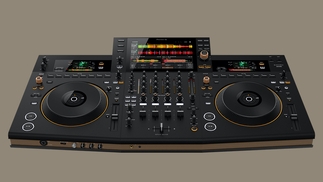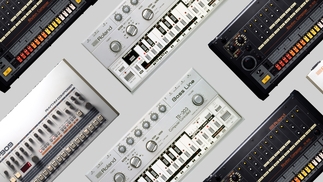JAMES MURPHY & 2MANYDJS TALK DESPACIO
Audiophiles unite
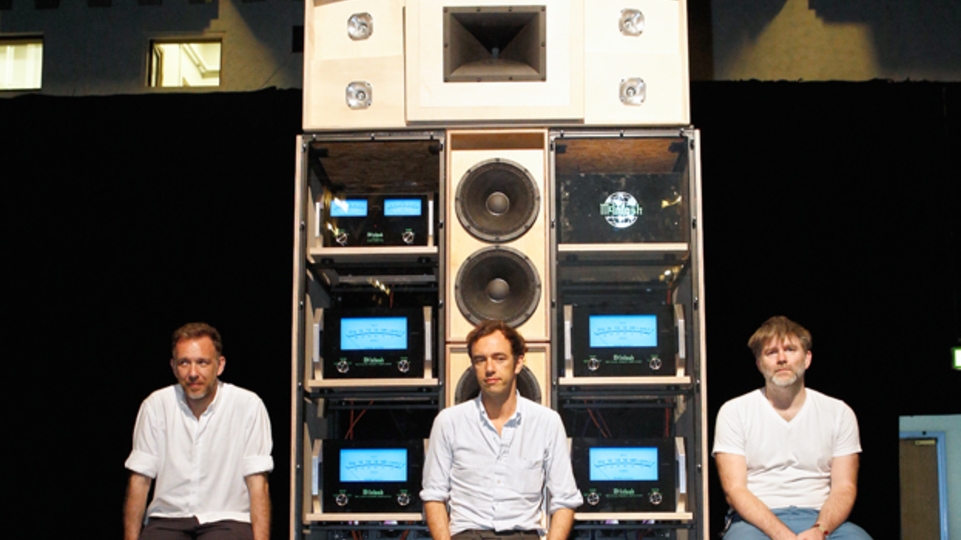
Despacio is the new project from DFA and LCD head honcho James Murphy, with more than a little help from his DJing buddies the Dewaele brothers, more famously known as Soulwax/2ManyDJs, and legendary New York studio designer John Klett. It's a club night dedicated to the maxim of good times and good music all experienced on a mammoth soundsystem, designed to truly surround the partygoer in an immersive experience that is often lost in traditional clubs and venues.
The idea being that once you step onto the dancefloor, you experience the music how it is intended to be heard — every nuance and detail without compromise. All this, and a soundtrack from three of the world's most in-demand DJs playing some of their favourite tracks all night long. Sounds like the making of a night to remember. But don't take our word for it. We linked with the cats behind the night to learn more...
How did Despacio come about?
James: “Despacio came about from talking with Dave and Steph from 2ManyDJs, it was over dinner or on a flight, something like that. Just one of those things that we spoke about but didn’t know if it would ever go anywhere. We often roll ideas off each other and whilst I never get to do mine, they always seem to get theirs done. I’ve worked with John Klett for over 20 years, he’s done consoles in my old DFA studios and has designed stuff for me from forever, and we just go way back, so it seemed like everyone involved would make great partners to get this accomplished.”
Dave: “It seemed to grow to the point where we were lucky that we had a team around us that were happy to get on board and see it through.”
John: “In a way you could say we have been working toward something like this since the mid-'90s, but if I had to put a date on this specific system, I guess it would be right when the last LCD release happened... I can sort of trace the conversational beginning to around May 2010 and it evolved from there.”
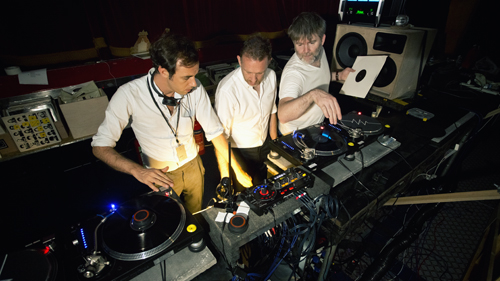
Is that what made you want to start this new project?
James: “Yeah that’s one of the things, I like hearing the different stories from when people go to clubs relaying different elements of the night, not all talking about just the same thing, enjoying different experiences throughout the whole night. So that’s what we wanted to do with Despacio.”
Dave: “The original idea never came from, 'Let's build a soundsystem', it always came from 'Let's do a night where the three of us would DJ together, no one else just us', instead of what we do on a weekly basis, as in just showing up at a club that’s not necessarily set up to play the kind of music we play at Despacio, partially due to the soundsystem and partially due to the conditions. Just the culture of how things are in clubs today, where there will be a headliner and three other DJs or more.
With Despacio we wanted to do something that was quite special, doing a whole night where every detail is exactly how we wanted it to be from the DJ booth to obviously the records, to the lights, the bar, and yes the soundsystem. And out of this whole concept the biggest coup was the soundsystem. It’s an incredibly extensive set-up, it's worth just under a million, so to have a soundsystem like this is incredible but it is just part of the whole idea.”
James: “Also I don’t typically like how many soundsystems sound, and I don’t like many club set-ups, so David, Steph and I have always complained about stuff like this. And as I used to be a system designer, we felt it was kind of like the right thing to see if we could design a system for the night.”
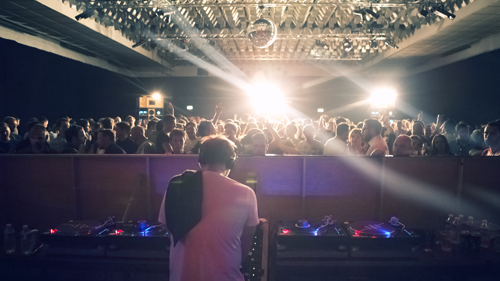
What is the technology that goes into the Despacio system set-up?
John: “As little as possible, without getting too technical, the system uses up to eight “stacks” of speakers and amps. The stacks are crossed over into five bands so we have subs, bass, lo-mid, hi-mid and UHF. We went for McIntosh amplifiers for everything but the subs. The subs are bought-in units and we have two of those per stack.
“The bass and lo-mid speakers are simple vented boxes with two 15” drivers in a roughly 10 cubic foot box for bass, and two 12” drivers in a roughly four cubic foot box for the lo-mids. The boxes are rectangular and the vents are not ducted — that means that the length of the vent is simply the thickness of the front baffle. The vents are larger in area and really follow a design paradigm that goes back to the earliest 'reflex' cabinets. The vent velocities are very low. The cabinets are 'tuned' lower than we are using them.
“The hi-mid horn and its driver are from JBL, the UHF drivers are 40 degree conical 'bullets' from Faital, an Italian company.”
I guess it’s a pretty loud soundsystem?
James: “Yes it is loud and can deliver a seriously loud sound, but that’s not the point. To us it is like driving an old-fashioned muscle car rather than a perfectly tuned modern day sports car with all its computer-aided engineering. A lot of new systems have a lot of digital processing before they hit the amplifier stage and this complicates the issue, messes with the sound. With our system it’s just a raw big sound. We’ve got oodles of power under the hood. We’ve got a lot of power packed in but we don’t have to flaunt it. We know it's there, but we can control the sound, we don’t have to run it into the red. You’ll never get anywhere near hitting the red, it's pretty much bottomless power. It just means that we can allow the music to move through the system. A modern day track is going to be louder than a Fleetwood Mac tune, but with our system we have the ability to play both tracks at the same volume levels, not compromising on what we can deliver.”
John: “The goal is not about making the loudest system but as a byproduct of what we are doing, the system can get pretty ridiculously loud. I have measured some peak levels that are pretty high — I mean, look, we have about 10,000 watts per stack. Take out the subs, as they are their own universe. This leads to a pretty powerful and loud system. “In practice we are running about 15 or 20dB under what the system is capable of doing so the whole thing is loafing along and running cool, effortless... that is the whole point — no stress, take it easy, relax, enjoy. It’s really about being relaxed sounding.”
So has the soundsystem become the most important element of Despacio?
James: “Yes and no, I think you just want sound that is right for the party, for me you get people who are starting to DJ more at festivals or on stages, you get all these line arrays that are really good for bands but I feel not good for DJs, as they are not surrounding you in sound, immersing you in sound, they are just hitting you in the face with sound. We were thinking about how clubs used to be, which is more about people being with each other, so that was the most important thing for me, are people having fun? That’s what I wanted to go back to.
“We wanted to create a system ‘in the round’ where the kind of music we wanted to play — which was not like just the latest and greatest, just anything we wanted to play — would hit people with enough bodily force and with enough clarity that it would be quite beautiful and quite physical, it was more about giving people the chance to have a different experience when listening to the song, that would sound puny in a normal club as most clubs offer a sound that is quite compressed. We wanted to offer a sound that would reflect good on a wider range of music.”
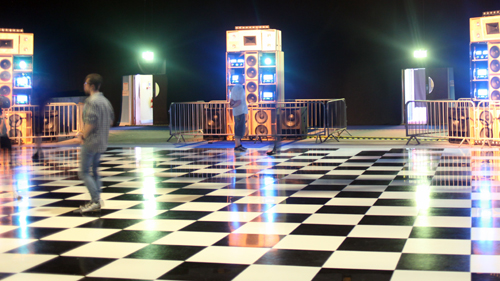
Why vinyl only?
James: “Vinyl only wasn’t us trying to make a point or trying to be like, 'Vinyl is the only way', I play digital tracks, too, it's fine. The difference when you’re playing on a modern DJ mixer between the vinyl and the CD or digital file is not that great, but if you want to take advantage of the system, you definitely need something that sounds good enough to take advantage of it. I just don’t think that CD players or digital things you can mix with sound that good, and with the system like this, you would definitely notice that and it would be a waste.”
How was the gig at the Manchester International Festival?
James: “It was great — we played three gigs: Thursday, Friday, and Saturday. All of them were quite different. Thursday was really open, fun, really relaxed, Friday was a bit more of a ‘trainspotting’ type night, people kind of staring up at us, it was a little bit more hard work, whilst Saturday was perfect, people just letting go and just more open, having a really good time to the music and the Despacio experience.”
Where will you be touring Despacio next?
James: “We are hoping that we do another thing in the UK, Glasgow or London or something, but we need to do three nights, as it's expensive to put on and it really should be for a club size that holds 700-1200 people for it to work. It's not for 10,000 people, so it's finding spaces and finding out how we want to do it, either on our own or with third party promoters. Eventually I hope it finds a home in Ibiza.”
Dave: “Yeah the original idea was to do a weekly night in Ibiza, and play what we call truly Balearic music — a mix of all these weird new wave to disco, old records, to novelty to new beat to acid house, all that kind of stuff which to us is truly Balearic. Ibiza didn’t happen and we ended up doing it at the Manchester International Festival. The attention is with the soundsystem, but clearly for us it’s about the whole thing, the whole package. It’s a really truly special thing in our lives that we are very happy to do again, so we are looking now to do more gigs or events, but they would have to be the right kind of thing.”
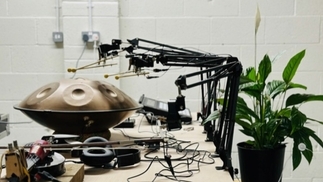
![Screenshot of [untitled] app interface](/sites/default/files/styles/djm_23_323x182_jpg/public/2023-09/untitled-app-music-new-1400x700.jpg?itok=pro0ZaB4)
